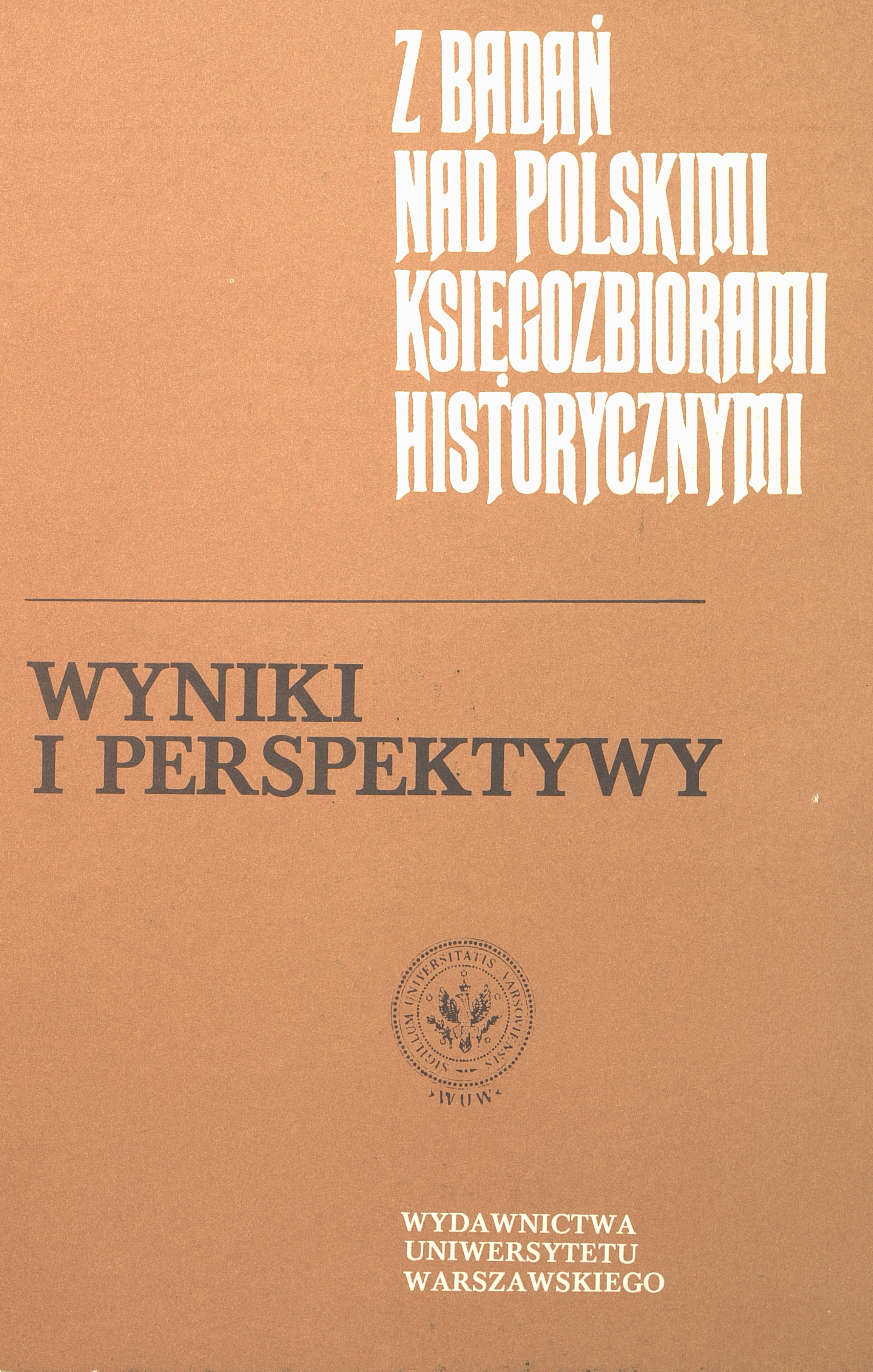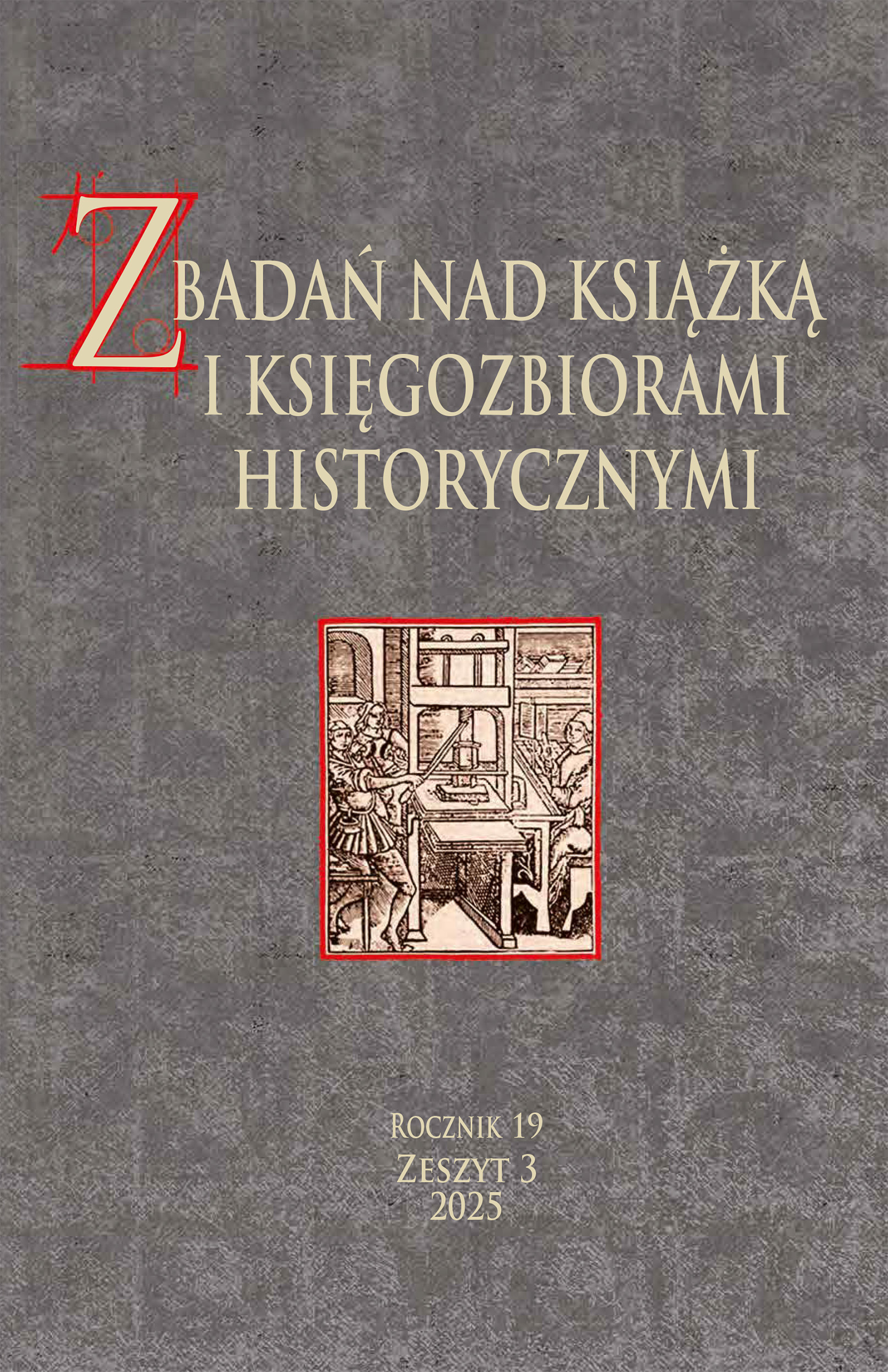From the history of codicology in Poland. On the 19th-century studies in the manuscripts of Jan Długosz's Annals
DOI:
https://doi.org/10.33077/uw.25448730.zbkh.1992.429Keywords:
manuscripts of Jan Długosz, codicology, editions of historical texts, editing.Abstract
The aim of the paper is to present a by now underestimated fact in the history of Polish codicology: the nineteenth-century studies in the manuscripts of Annals by Jan Długosz (1415-80). A large number of codices as well as eminent position of Długosz in Polish medieval literature has for long drawn attention of both general and professional opinion to this textual heritage.
In the paper four periods of intensive inquiry into copies of Annals were identified. The first one, of the second half of 18th century, was marked by biographical and bibliographical
studies of Jan D. Janocki. He came across the manuscripts of Annals in Zaluscian Library in Warsaw, where he was prefect (librarian). He described them, along with other copies from
outside of this library. In the second period, when literary history was also a basis of research, the number of known copies was expanded by Michał Wiszniewski, who scrupulously collected information about manuscripts discovered during the first four decades of the 19th century, as well as those which had been known earlier. A new research trend was launched during the years 1840-1850 by Aleksander Batowski and Józef Muczkowski.
Their work belongs to the third period of Annals studies. Batowski described codices form the libraries of Galicia (Lemberg, Cracow, and Sieniawa); Muczkowski also collected information about them, and in addition about copies deposited at other Polish territories and abroad. Due to the professional background of both scholars profound codicological findings are the feature of this period. It was inspiring the last, fourth one, marked by the labour of publishing Długosz's Opera omnia, including Annals. A 1858 announcement of the intended publication aroused unprecedented commitment, which led to collecting information on nearly 100 manuscript versions. This was used by Aleksander Przeździecki, who took up an initiative to publish Długosz's works, and who discovered the autograph of Annals, and a little later by Henryk Zeissberg in his textbook on Polish medieval historiography.
At the early seventies of the nineteenth century explres the period of intensive research and study of Annals. Later some separate discoveries were made, but they were not linked to the systematic study of Długosz's work.
Author attempted also to reveal methods of an eighteenth and nineteenth century manuscript student in Poland, their origin and early stage of development.







